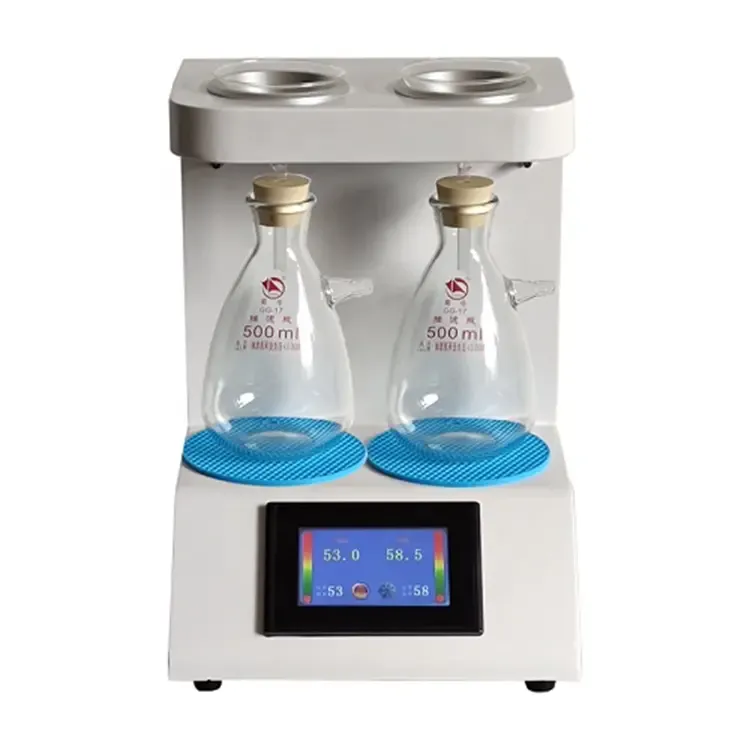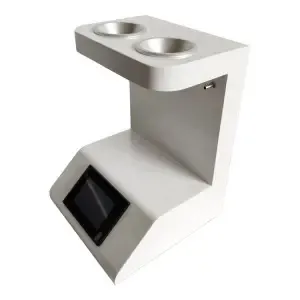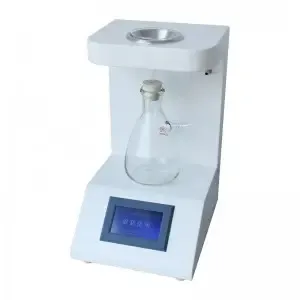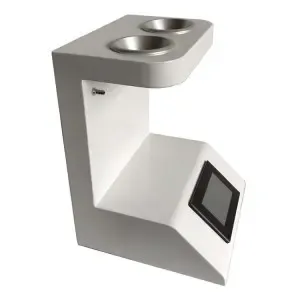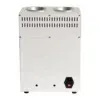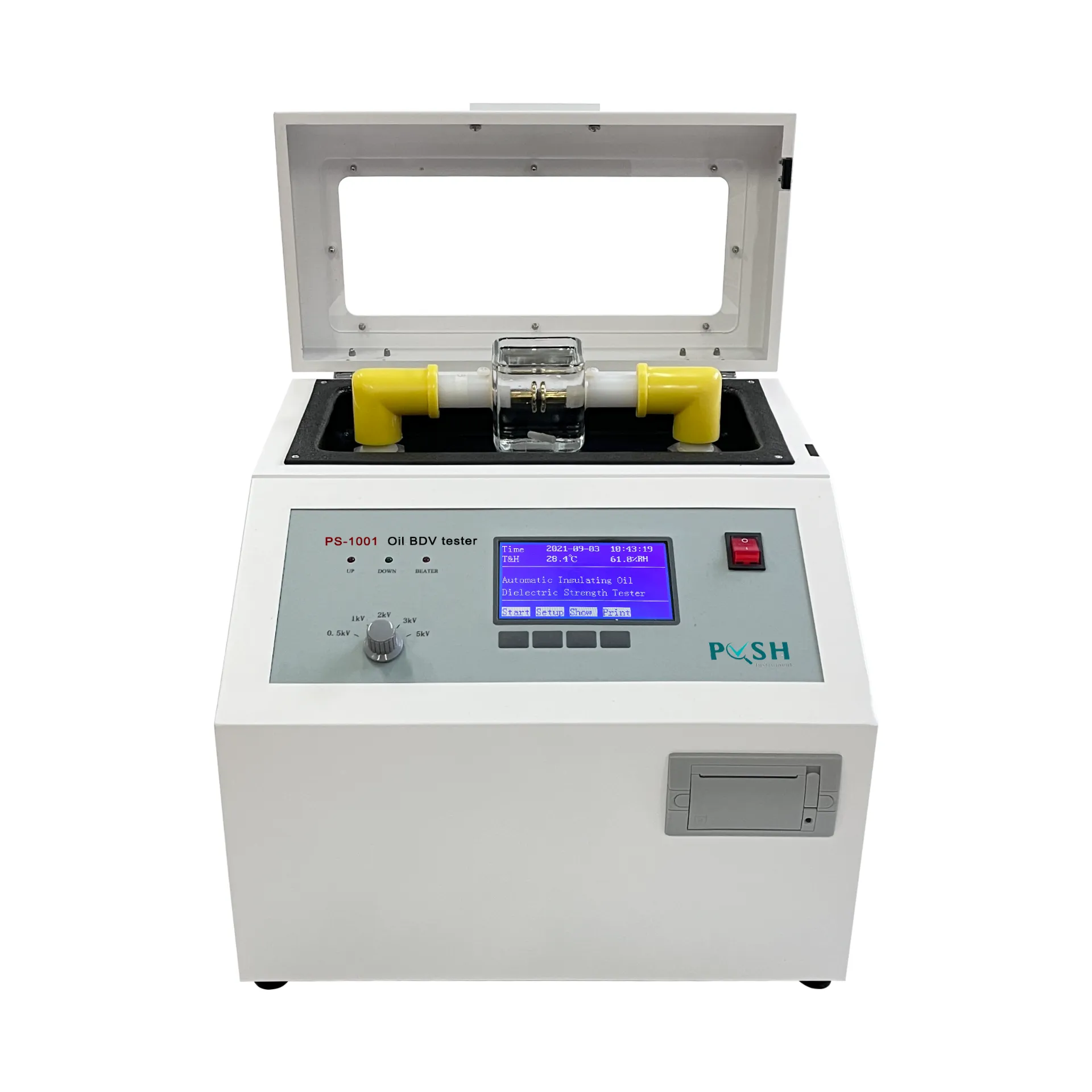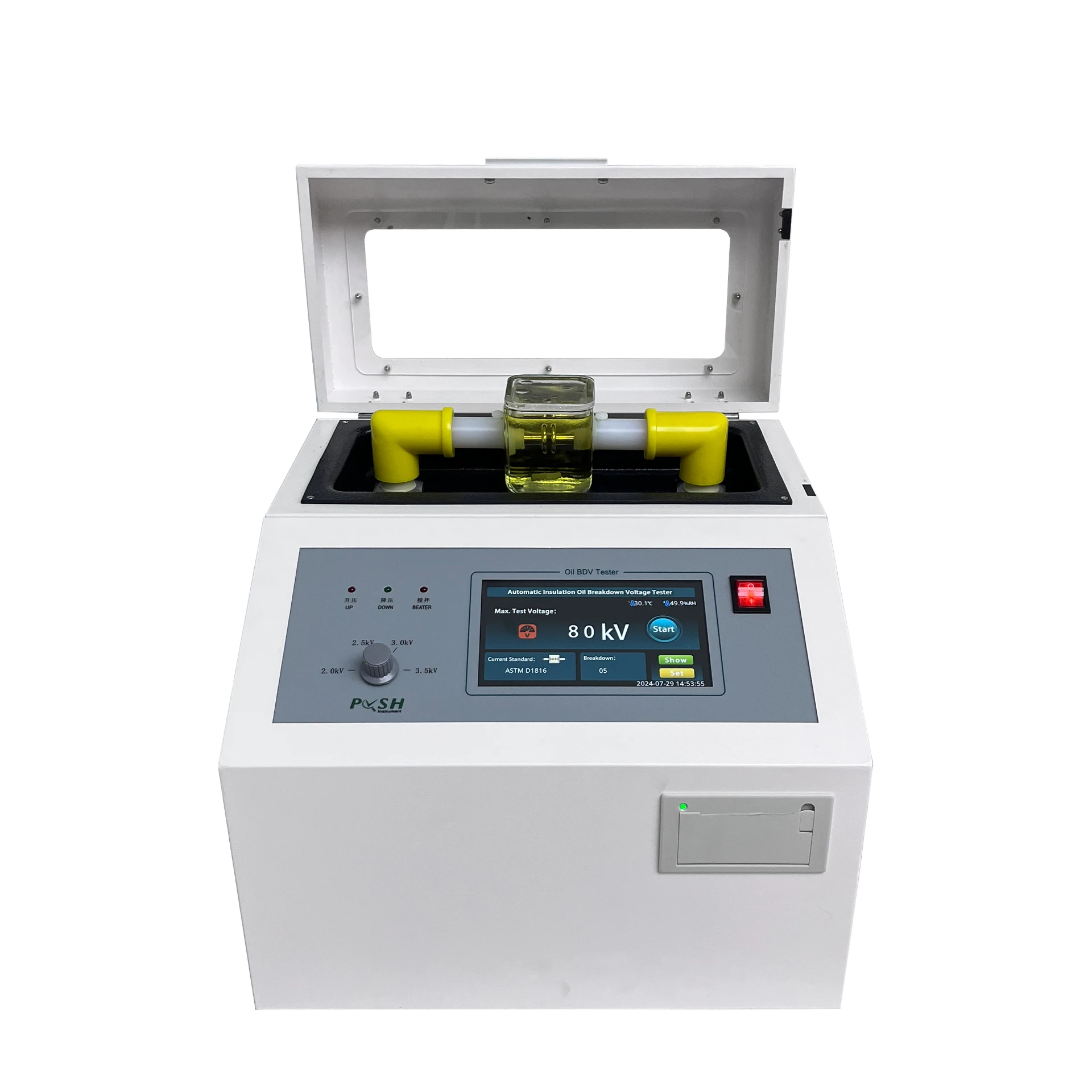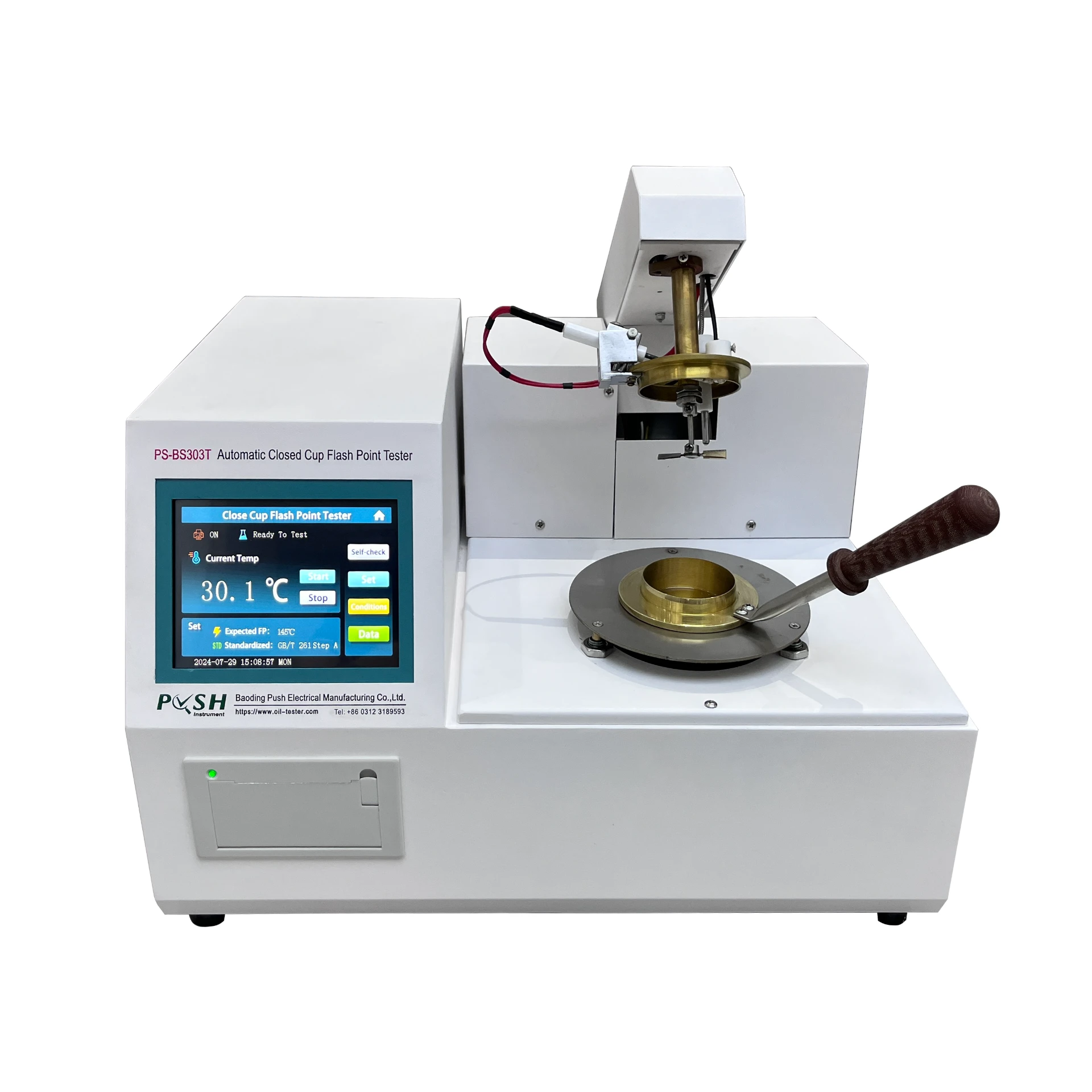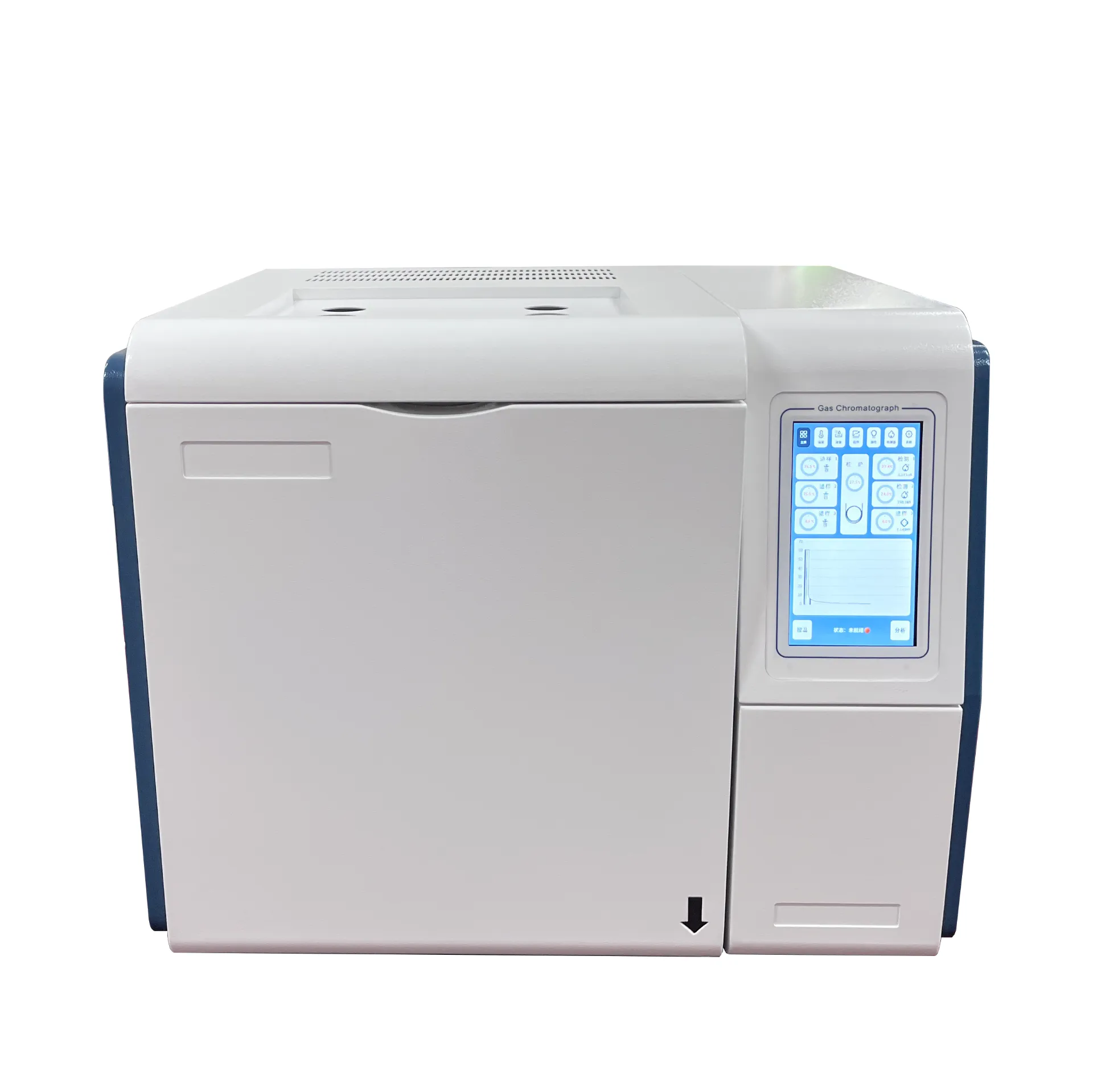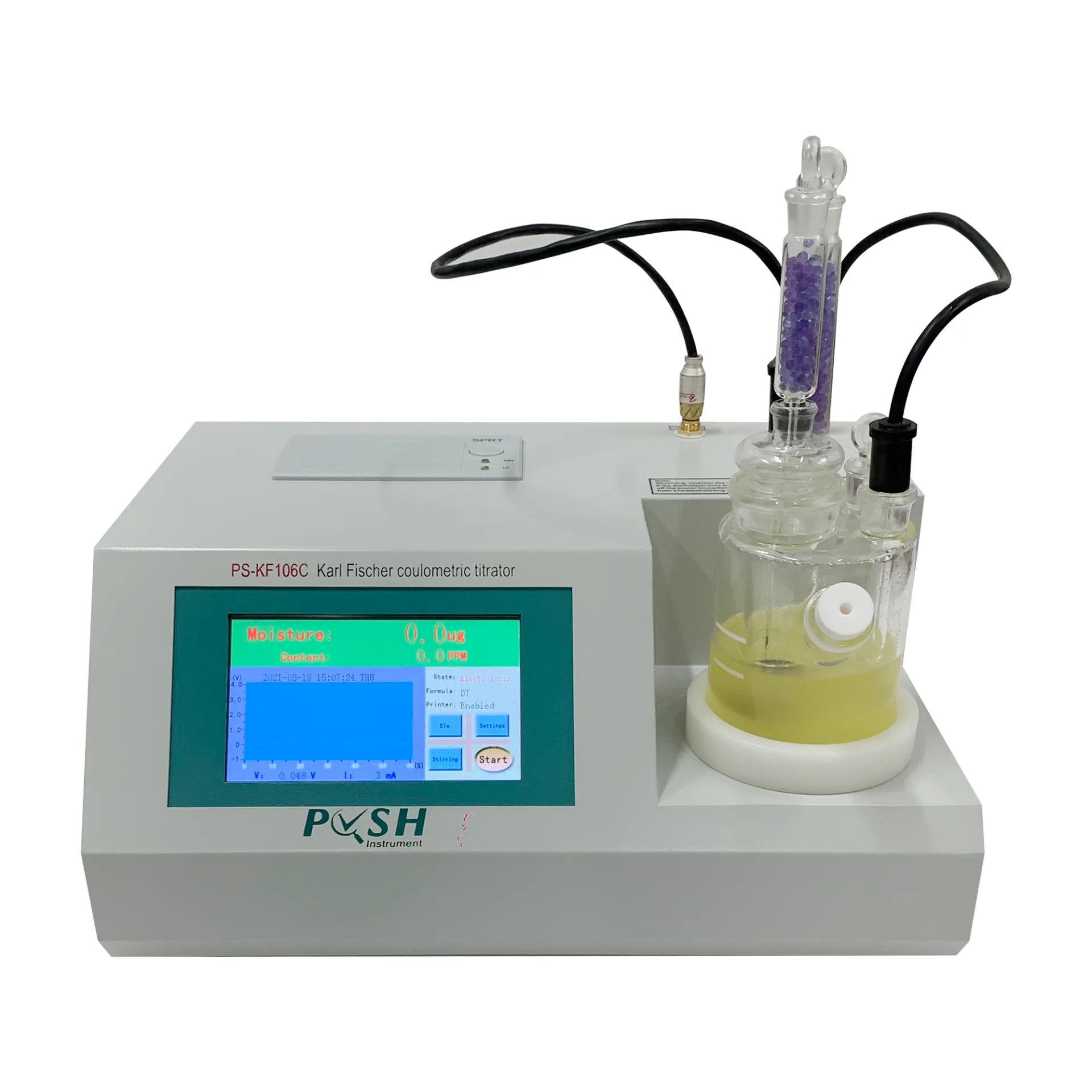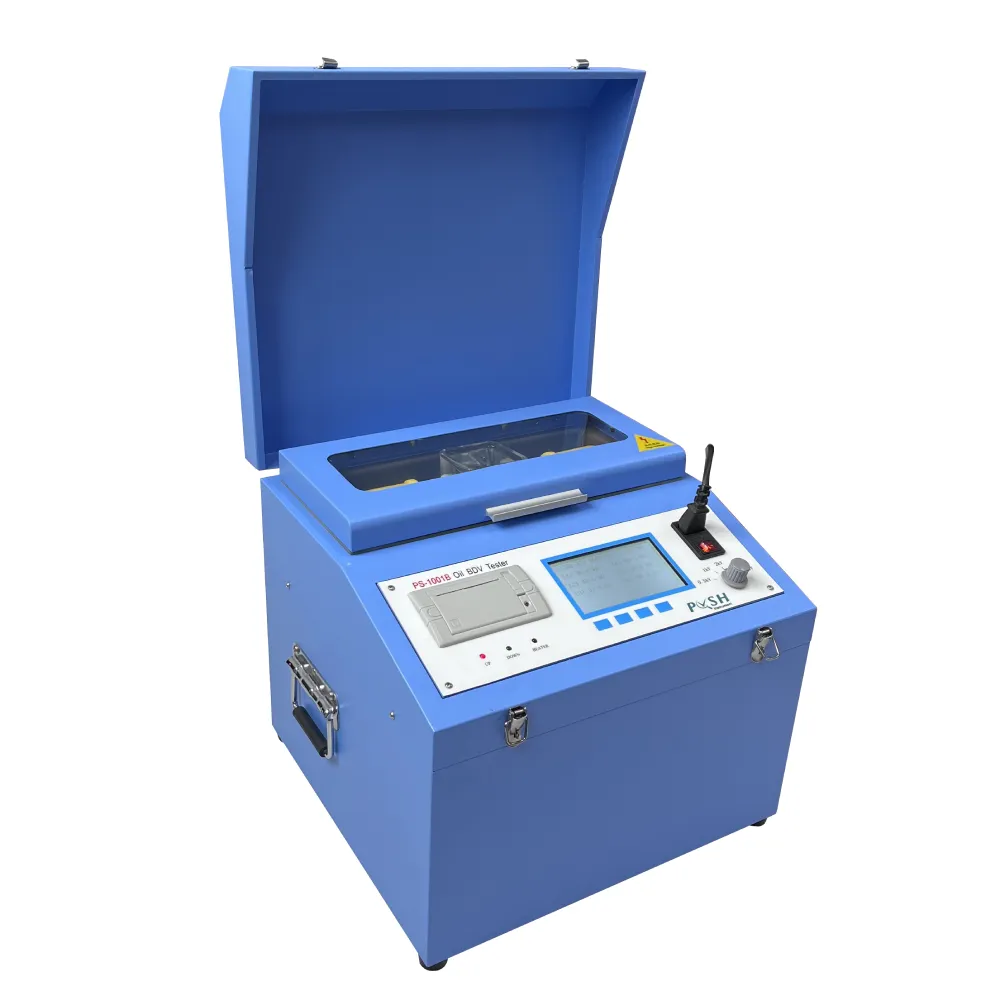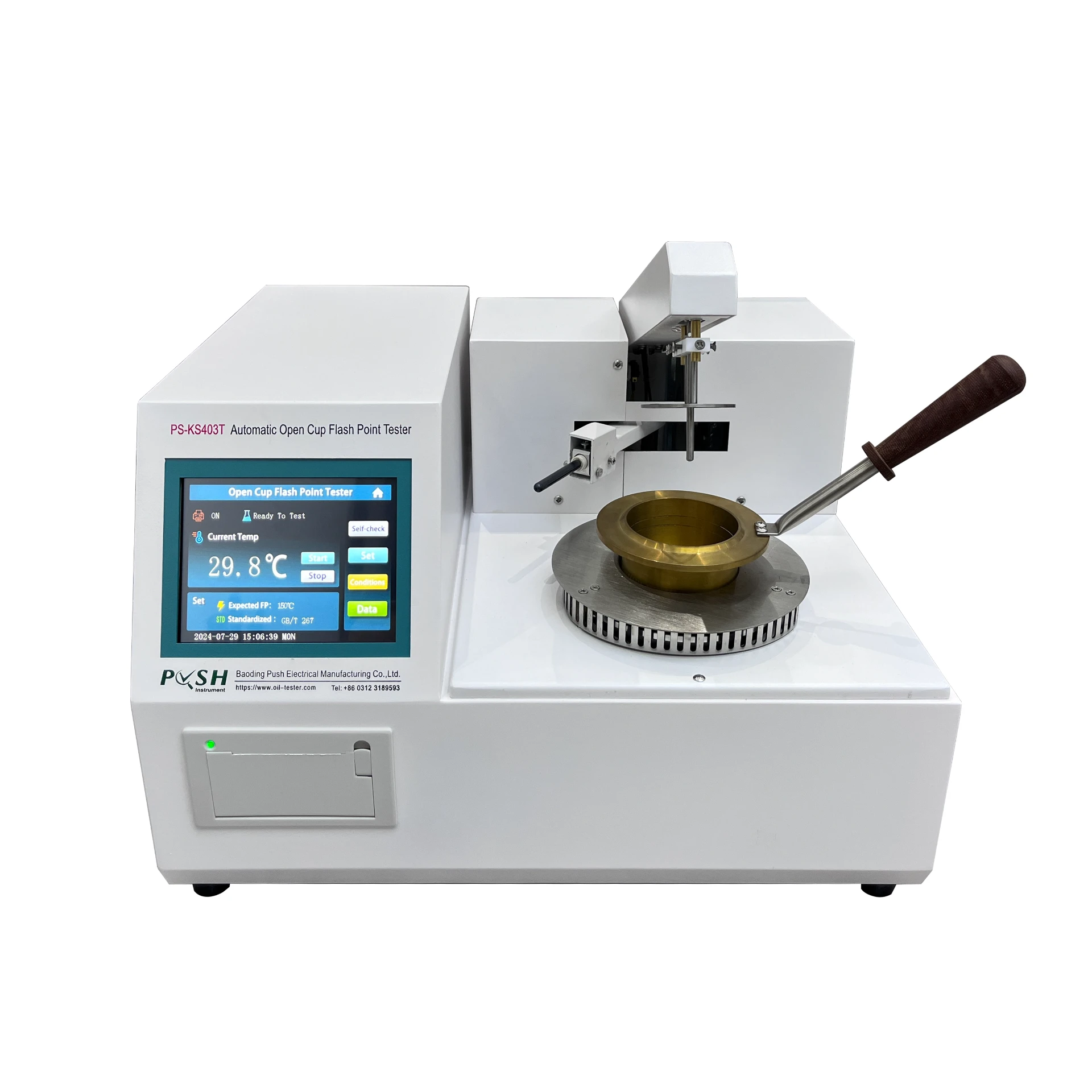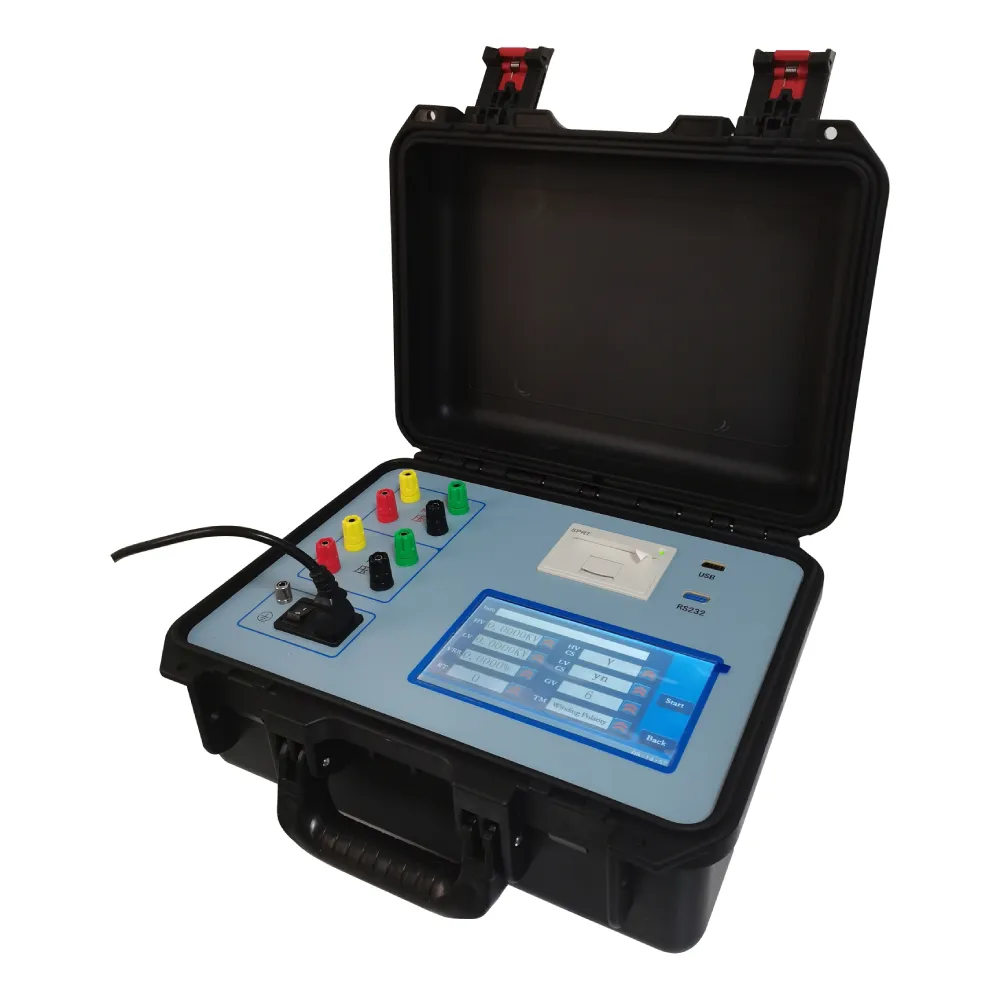 English
English


- 1.3-inch TFT true color touch screen with a resolution of 480×272, the human-computer interaction is beautiful and easy to use.
2. Using 32-bit microprocessor as the main control core, a new generation of intelligent operating system.
3. PID temperature control, precise control of the temperature of the constant temperature funnel.
4. The built-in oil-free and maintenance-free vacuum pump is used, and the vacuum filtration is controlled by the program.
5. Uniquely designed vacuum pump structure, even if the oil sample is sucked into the vacuum pump, it will not damage the instrument and reduce accidental losses.
6. The structure is compact, and the desktop only occupies 1.4 sheets of A4 paper.
Introduction to the Mechanical Impurities Tester:
The Mechanical Impurities Tester is a specialized instrument designed for determining the mechanical impurities content in petroleum products, such as lubricating oils, fuels, and hydraulic fluids. Mechanical impurities refer to solid particles, debris, or contaminants present in the oil that can affect its performance and longevity.
- Lubricating Oil Industry: Used for quality control and assessment of lubricating oils to ensure they meet cleanliness standards and performance requirements.
- Fuel Industry: Employed for evaluating the cleanliness of fuels, including diesel, gasoline, and biodiesel, to prevent engine damage and fuel system fouling.
- Hydraulic Systems: Essential for monitoring the cleanliness of hydraulic fluids to prevent wear and damage to hydraulic components and systems.
- Petrochemical Industry: Utilized for assessing the cleanliness of various petroleum-based products, including base oils, gear oils, and turbine oils.
- Quality Assurance: Ensures that petroleum products meet cleanliness specifications and standards, preventing equipment malfunctions, component wear, and system failures.
- Preventive Maintenance: Helps in identifying potential issues early by detecting excessive mechanical impurities, allowing for timely maintenance and replacement of contaminated oils.
- Condition Monitoring: Enables continuous monitoring of oil cleanliness levels in critical equipment and systems, facilitating proactive maintenance and troubleshooting.
- Research and Development: Used in laboratories and research facilities to study the effects of operating conditions, filtration methods, and additives on mechanical impurities in oils, contributing to the development of cleaner and more efficient lubricants and fuels.
The Mechanical Impurities Tester works by extracting a sample of the oil and subjecting it to filtration through a fine mesh or membrane. The solid particles and contaminants present in the oil are retained by the filter, while the clean oil passes through. The amount of residue retained on the filter is then measured quantitatively, providing a precise assessment of the mechanical impurities content in the oil. This information helps operators and manufacturers ensure the cleanliness and integrity of petroleum products, thereby optimizing equipment performance, reliability, and service life.
|
using ways |
DL/T429.7-2017 |
|
show |
4.3 inch liquid crystal display (LCD) |
|
Temperature control range |
Room temperature~100℃ |
|
Temperature control accuracy |
±1 ℃ |
|
Resolution |
0.1 ℃ |
|
rated power |
rated power |
|
size |
300×300×400mm |
|
weight |
8kg |
-
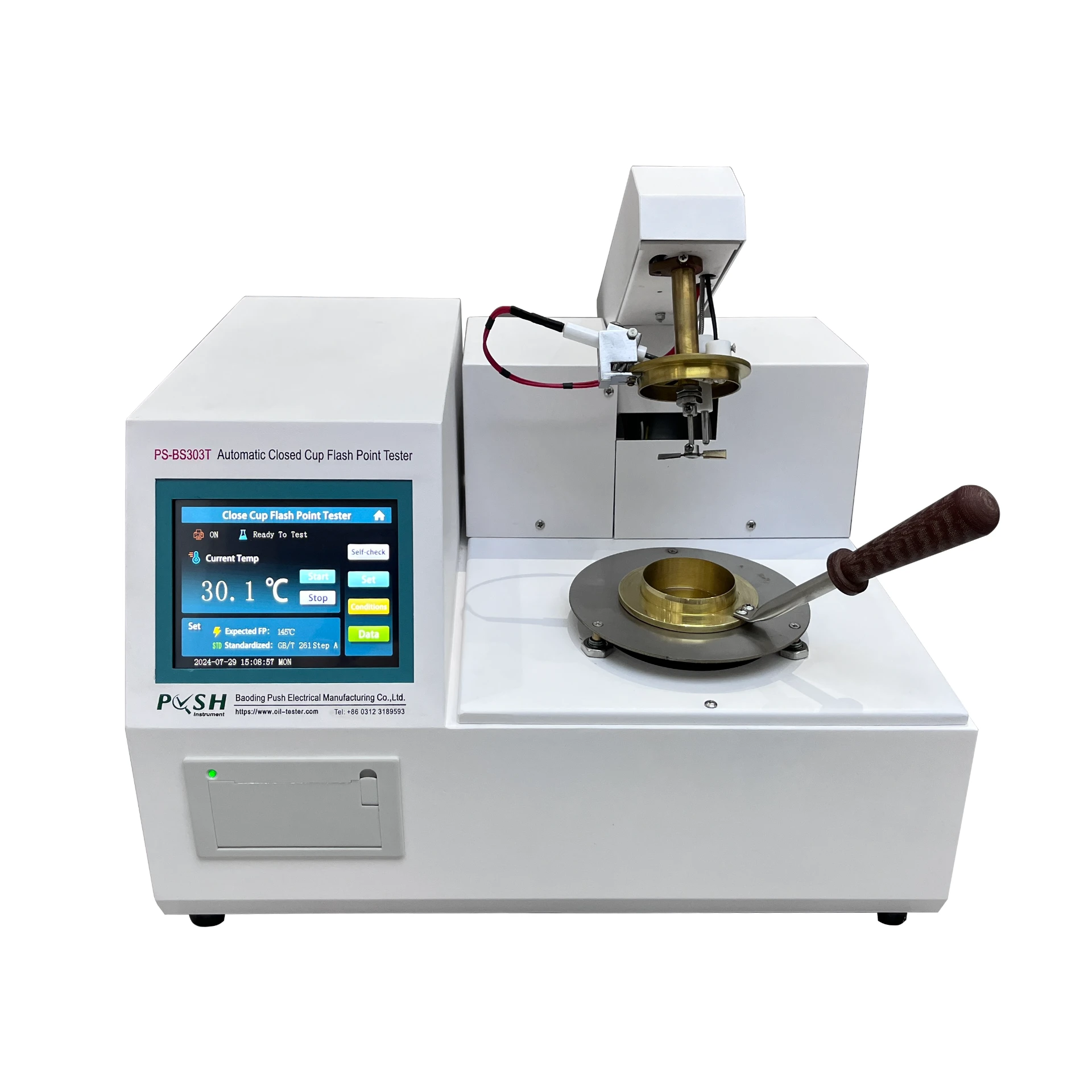 Differences between open cup flash point tester and closed cup flash point testerFlash point is the lowest temperature at which the test flame causes the sample vapor to ignite and the flame to spread to the surface of the liquid under the specified test conditions. The burning point is the temperature at which the sample is heated up and can burn continuously for at least 5 seconds on the basis of the flash point. The flash point and the burning point are used to indicate whether there are highly volatile or flammable substances in relatively non-volatile or flammable substances. They are one of the important parameters for the transportation, storage, operation and safety management of petroleum products.Detail
Differences between open cup flash point tester and closed cup flash point testerFlash point is the lowest temperature at which the test flame causes the sample vapor to ignite and the flame to spread to the surface of the liquid under the specified test conditions. The burning point is the temperature at which the sample is heated up and can burn continuously for at least 5 seconds on the basis of the flash point. The flash point and the burning point are used to indicate whether there are highly volatile or flammable substances in relatively non-volatile or flammable substances. They are one of the important parameters for the transportation, storage, operation and safety management of petroleum products.Detail -
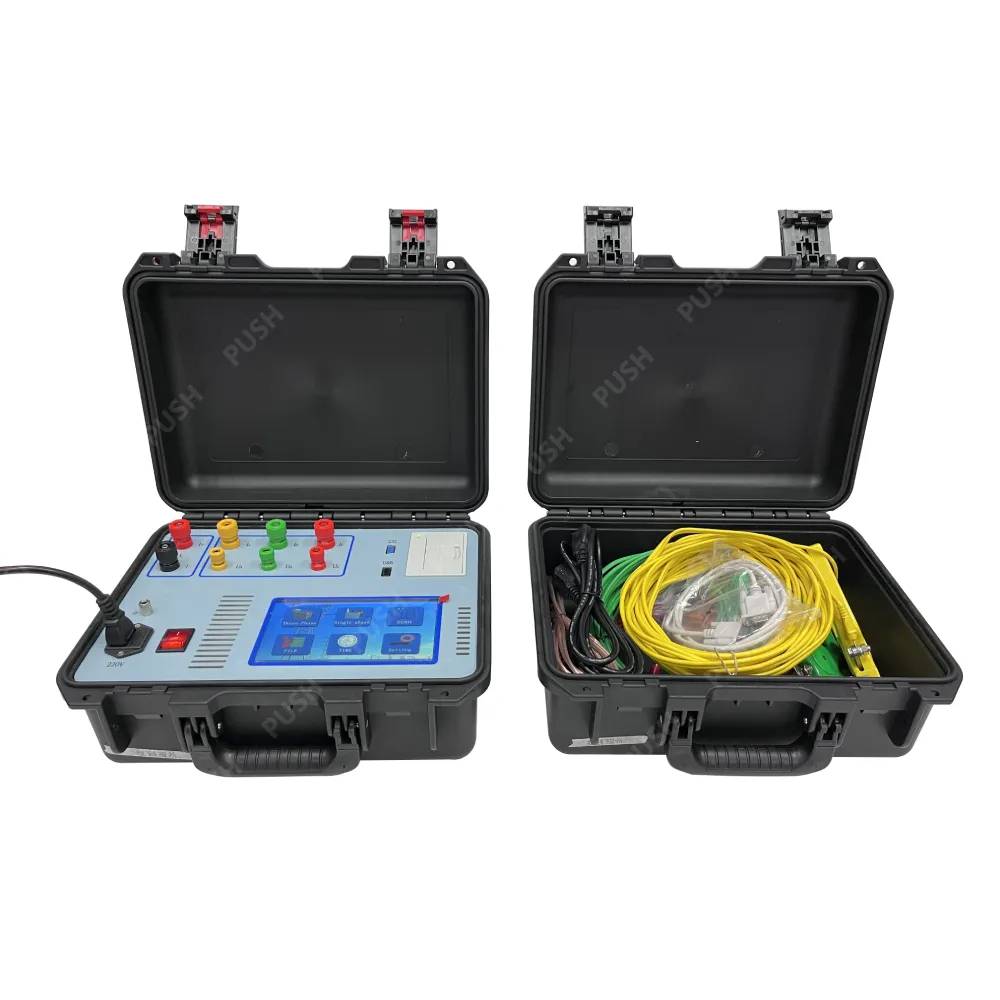 The Reliable Load Tap ChangerWhen it comes to enhancing the efficiency and performance of transformers, a load tap changer transformer is essential.Detail
The Reliable Load Tap ChangerWhen it comes to enhancing the efficiency and performance of transformers, a load tap changer transformer is essential.Detail -
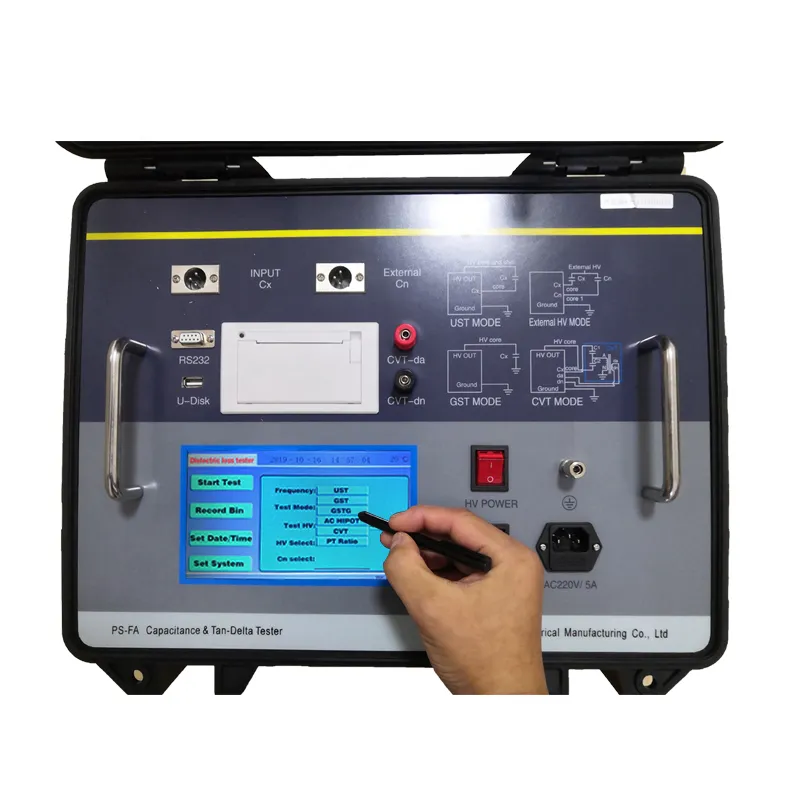 The Essential Guide to Hipot TestersWhen it comes to ensuring electrical safety and compliance, a reliable hipot tester is indispensable.Detail
The Essential Guide to Hipot TestersWhen it comes to ensuring electrical safety and compliance, a reliable hipot tester is indispensable.Detail


